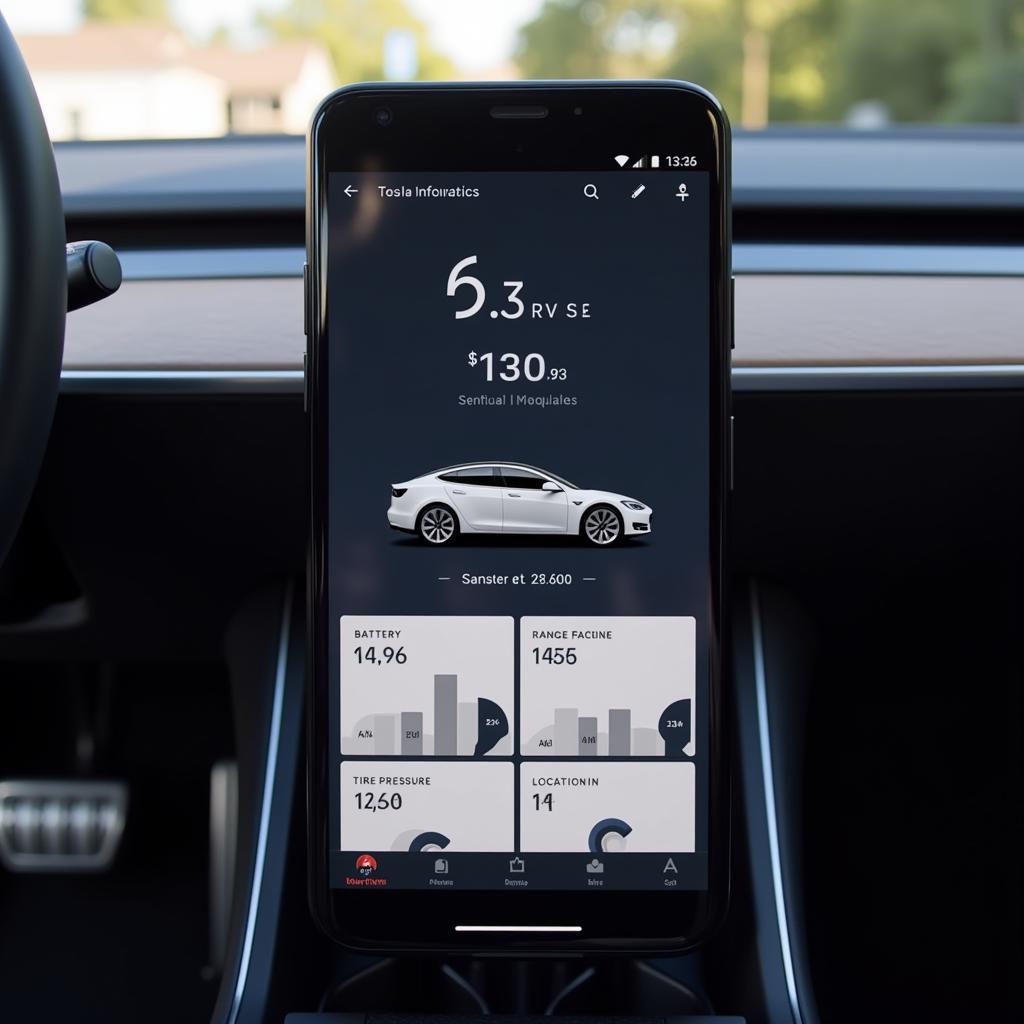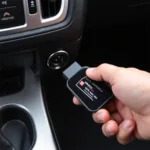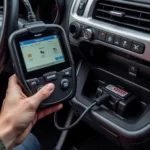The Tesla Model 3, a beacon of automotive innovation, often leads to questions about its diagnostic capabilities. One common query is, “Where is the OBD2 port on a Model 3?”. While the Model 3 doesn’t have a traditional OBD2 port like gasoline-powered vehicles, it offers alternative ways to access diagnostic information.
Unveiling the Mystery: Why No Traditional OBD2 Port?
The absence of a standard OBD2 port on the Model 3 might seem unusual, but it stems from the fundamental difference in technology. Traditional cars rely on OBD2 ports to communicate with external diagnostic tools, primarily to monitor emissions-related systems.
Tesla, being fully electric, eliminates the need for traditional emissions control systems. Instead, the Model 3 boasts a sophisticated internal network that monitors various vehicle systems. This network uses proprietary protocols, making a universal OBD2 port incompatible.
Accessing Diagnostic Data on Your Model 3
While a traditional OBD2 port is absent, Tesla provides several avenues to access diagnostic information:
- Tesla Mobile App: This app grants you real-time data on your vehicle’s status, including battery level, range, tire pressure, and more.
- Tesla Service Center: Tesla service centers possess specialized equipment and software to perform in-depth diagnostics and software updates.
- Third-Party Apps and Devices: Several third-party apps and devices, specifically designed for Tesla vehicles, can connect to your car wirelessly and provide diagnostic insights.
Understanding the Benefits of Tesla’s Approach
Though the lack of a conventional OBD2 port might appear limiting, Tesla’s approach offers distinct advantages:
- Enhanced Security: Proprietary protocols make unauthorized access to the vehicle’s systems significantly more challenging.
- Over-the-Air Updates: Tesla can remotely diagnose and address many issues through software updates, often eliminating the need for physical visits to service centers.
- Streamlined Diagnostics: Tesla’s integrated system provides comprehensive and detailed data, enabling technicians to diagnose and resolve problems efficiently.
Navigating the World of Tesla Diagnostics
Owning a Tesla Model 3 opens the door to a new era of automotive technology. While the absence of a traditional OBD2 port might seem unfamiliar, it underscores Tesla’s commitment to innovation and efficiency.
Remember, whether you’re checking your battery status or seeking professional diagnostics, Tesla provides the tools and resources to ensure a seamless ownership experience.
FAQs about Model 3 OBD2 Port
Q1: Can I use a generic OBD2 scanner on my Model 3?
A: No, generic OBD2 scanners are not compatible with the Tesla Model 3 due to its unique communication protocols.
Q2: How do I check for error codes on my Model 3?
A: You can check for error codes using the Tesla mobile app or by visiting a Tesla Service Center.
Q3: Can I perform software updates myself?
A: Tesla typically pushes software updates automatically. However, you can schedule updates through your touchscreen display.
Q4: What if I have a problem with my Model 3 that I can’t diagnose through the app?
A: If you encounter issues beyond the scope of the mobile app, it’s recommended to contact Tesla roadside assistance or schedule a service appointment.
Q5: Are there any advantages to Tesla’s diagnostic system?
A: Yes, Tesla’s system offers enhanced security, over-the-air update capabilities, and streamlined diagnostics for technicians.
Exploring Further: Your Guide to OBD2 Insights
For insights into the world of OBD2 and its applications in other vehicles, check out these resources:
- apple obd2 app: Discover the power of OBD2 diagnostics on your Apple devices.
- best obd2 apps: Explore a curated list of the top OBD2 apps for comprehensive vehicle insights.
Need further assistance with your Model 3 diagnostics? Reach out to our expert team via WhatsApp: +1(641)206-8880 or Email: [email protected]. We’re available 24/7 to provide guidance and support.


